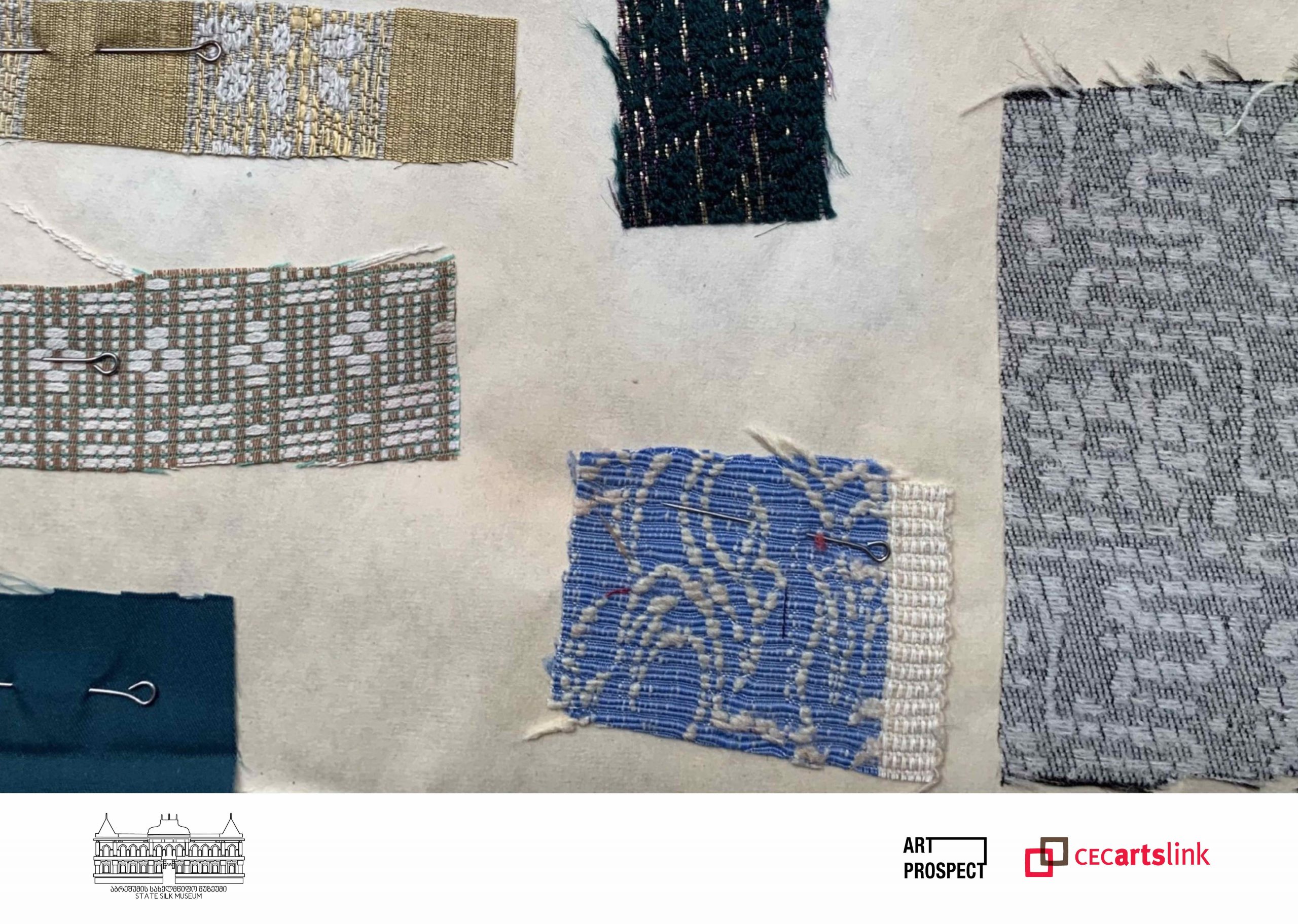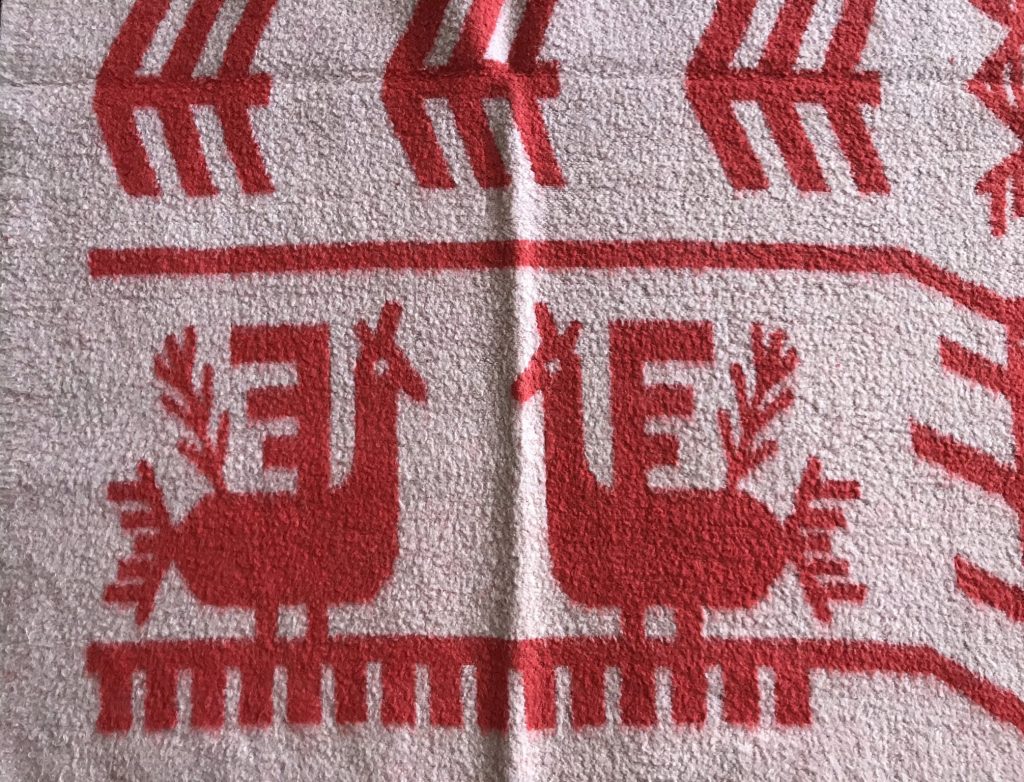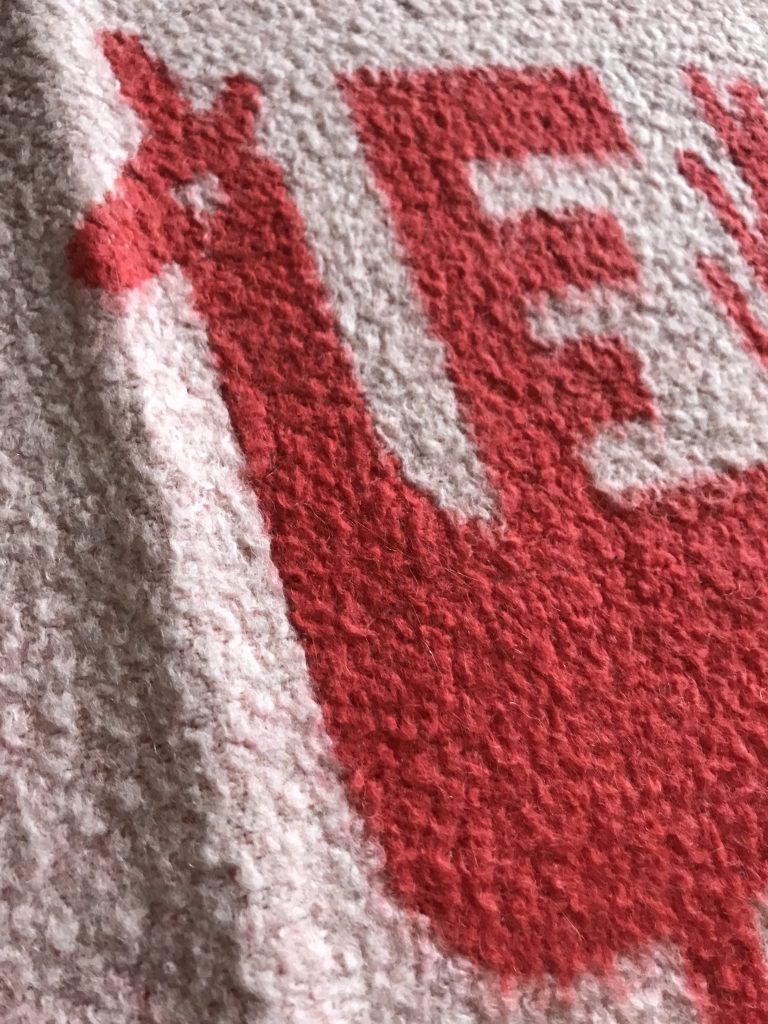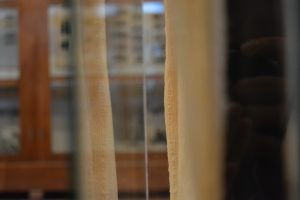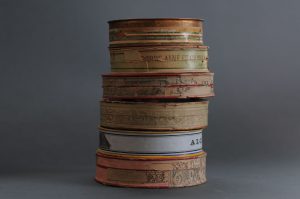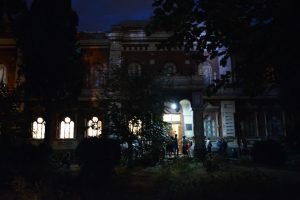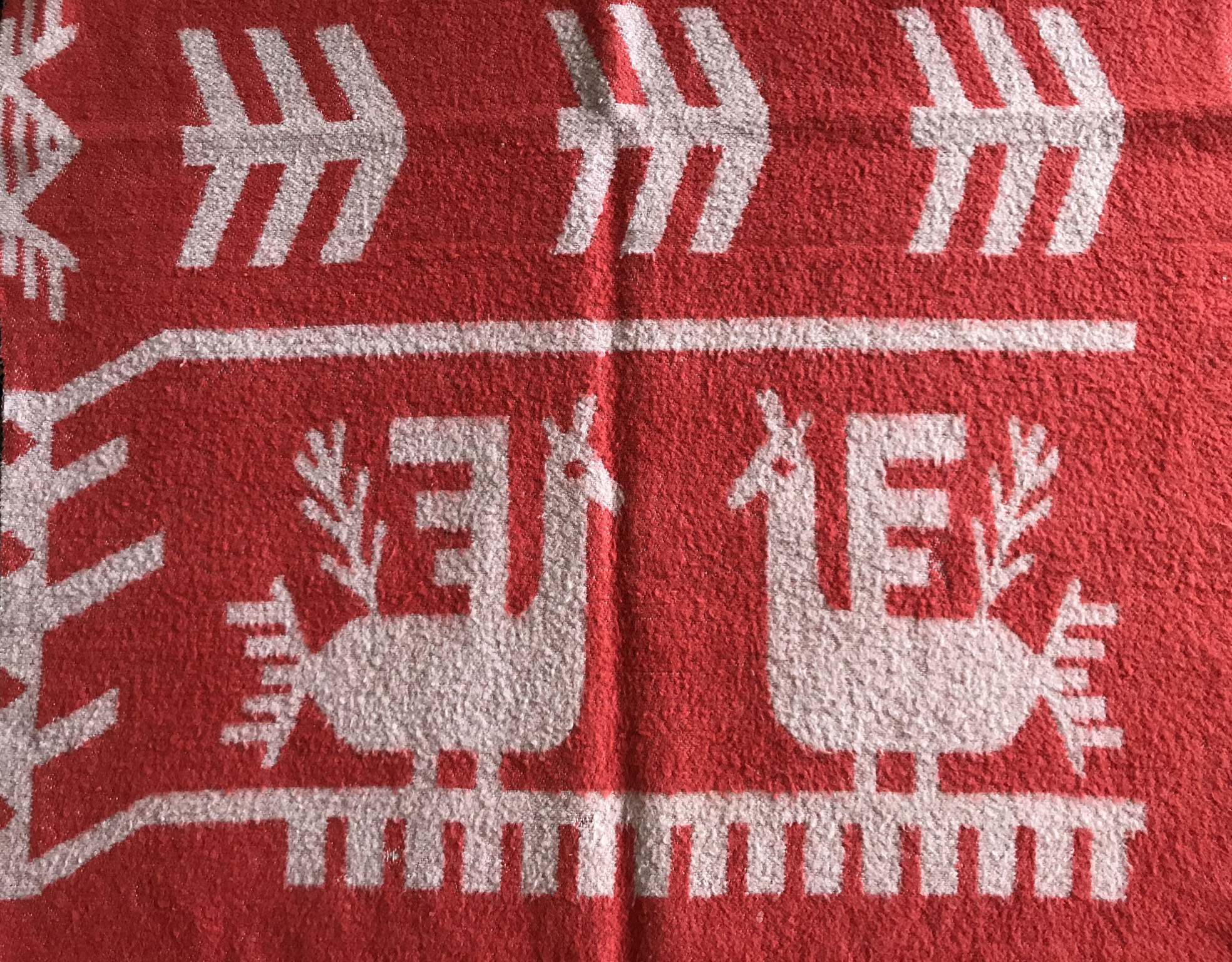
According to my birth certificate, I was born in the Georgian Soviet Socialist Republic. Although many years have passed, objects that were made during the Soviet time, today speak about this part of history. In addition to books, textiles can also tell us about this period. It turns out that they convey more information than I thought.
The textile industry was a leading one in Georgia. According to Giorgi Gamtsemlidze (The Minister of Light Industry during 1972-1985), the light industry was producing 5.17 million meters of woolen textile per year.
At a glance, it might be hard to say what is so special about industrial textiles. Out of the 5 million meters, let’s discuss a 1,5-meter-long woolen blanket for children, produced in the 70s. It is a rectangular textile with two colors, approximately 160×80 cm in size. Different forms follow the entire side of the blanket. You will find a tree, a deer or a phoenix, a fish, or other ornaments, which can have corresponding symbolic meanings.
I do not know, and I will never know, if the artist made this stylized form on purpose, or if it appeared to them through the collective unconscious. But it is a fact, I spent my childhood thinking that while I was asleep, deers were “protecting” me.
To define these forms, it is helpful to refer to the analysis of symbols that are preserved in folklore. For example, a deer, considered as the most popular zoomorphic archetype in Georgian art, similarly to the tree of life, is thought to be the symbol that connects different worlds.*
Undoubtedly, certain motifs repeat in folklore and respond to archetypal memory. Intuitively or otherwise, this line continued in the Soviet industry as well.
Tata Gachechiladze
Architect
* For more details about these and other symbols, see Ana Shanshiashvili’s text.
